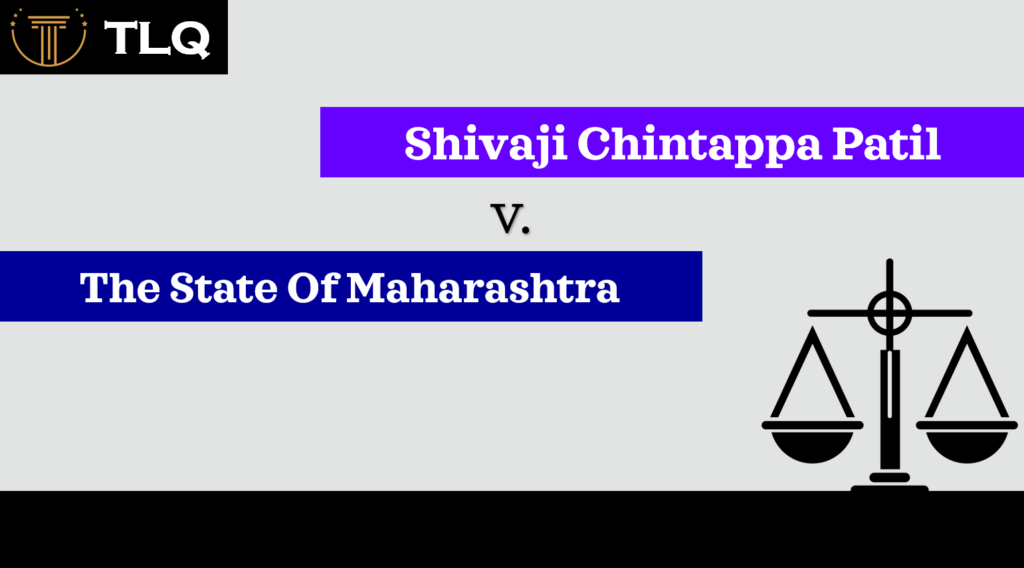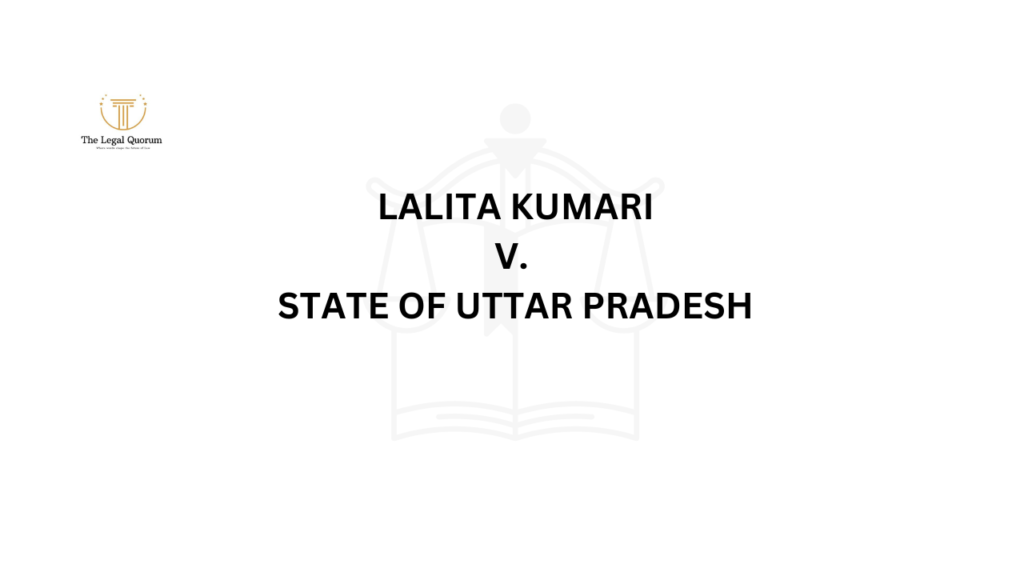Published on: 10th October 2025
Authored by: V. Dhamini
Dr. B. R. Ambedkar National Law University, Sonepat
Abstract
This article delves deep into the contentious issue of death penalty in India. While capital punishment is legally sanctioned for the rarest of rare cases, its actual application reveals several inconsistencies and moral dilemmas. Drawing from landmark Supreme Court judgments the article traces how judicial interpretation has attempted to balance retributive justice with constitutional values like dignity and fairness. It also examines how reformation, despite being a recognised principle of punishment, has been sidelined many times in favour of deterrence and societal retribution. Ultimately, this article argues that the death penalty, in its current stance, stands at odds with justice that is humane, equal, and reformative.
Keywords: Death Penalty, Justice, Constitution, Reformation, Morality
Introduction
Capital punishment, or the death penalty, refers to the state-sanctioned execution of an individual for a crime deemed so grievous that it warrants the ultimate punishment. In the modern era, the death penalty has become a subject of global debate. In India too it continues to ignite a fierce dispute. On one hand, it is seen as a tool for retribution and justice; on the other, as a practice increasingly out of step with modern democratic values. At the intersection of law and morality lies a critical question: Should India continue to retain capital punishment?
At the end of 2023, 561 prisoners were living under a sentence of death, which is the highest population on death row in a single calendar year in nearly two decades as per the records published by the National Crime Records Bureau and as of 31st December 2023, 120 death sentences were imposed by trial courts across the country.[1] Despite being a constitutional democracy founded on principles of dignity and justice, India remains among the few large democracies that have not yet abolished the death penalty.
Judicial Interpretation
Many countries have now moved towards the complete abolition of death penalty and those who have retained it have observed a moratorium on the execution. [2] The death penalty is reserved for the most serious crimes that deeply shock society. In such cases, the public expects the judiciary to impose the death penalty on those responsible perpetrators. When the court sympathizes with the death row prisoner they might commute his punishment to life imprisonment.[3]
India’s approach to capital punishment has evolved primarily through judicial interpretation. While the punishment is constitutionally permissible, the judiciary has repeatedly underscored that it must be exercised with utmost restraint.
In Francis Coralie Mullin v. The Administrator, Union Territory of Delhi[4], the Supreme Court held that the right to life is not merely the right to animal existence but includes the right to live with human dignity. Can capital punishment coexist with a Constitution committed to the protection of dignity and life?
In Rajendra Prasad v. State of UP,[5] Justice Krishna Iyer emphasized that the death penalty violates Articles 14, 19, and 21 of the Constitution unless exceptional circumstances justify its imposition.
He further outlined two essential prerequisites for imposing the death penalty:
- Special reasons must be overtly chronicled for awarding the death sentence.
- The death penalty must be reserved for extraordinary cases.
The Law Commission of India, in its 262nd Report published in August 2015, suggested ending the death penalty for all crimes, except in cases involving terrorism or acts of war against the state[6].
In Bachhan Singh v. State of Punjab[7], the petitioners argued that the capital punishment was inherently irreversible, and in a system where judicial fallibility is a real danger, the margin for error could be fatal. The death penalty, they said, was not just legally problematic, it was “morally indefensible, a cruel, inhuman and degrading act that had no place in a modern democratic society.” The petitioners rooted for reformation and rehabilitation, urging the court to recognise the human capacity for change, even in those who have committed the gravest offences.
Despite these arguments, four of the five judges on the bench rejected the contention that the death penalty violated the Constitution. In doing so, they overruled the reasoning in Rajendra Prasad and reaffirmed the precedent in Jagmohan Singh[8], ruling that capital punishment need not be limited only to cases threatening national security or public order.
The majority held that procedural safeguards, such as pre-sentence hearings, and mandatory confirmation of the death sentence by the High Court, offered sufficient protection against judicial errors.
It was here that the Supreme Court gave birth to the famous principle of the “rarest of rare” doctrine. The Court declared that a death sentence could only be imposed where the crime and the criminal’s circumstances revealed such exceptional gravity that no other punishment would suffice. It stressed the need for judges to examine not just the act, but also the actor, his background, motive, and the possibility of redemption.
This doctrine was further elucidated in Machhi Singh v. State of Punjab[9]. Justice Thakkar outlined five categories to help assess whether a case deserved capital punishment: (1) manner of commission of murder, (2) motive, (3) anti-social or socially abhorrent nature of the crime, (4) magnitude of the crime, and (5) personality of the victim.
Yet, not all judges agreed in Bachhan Singh case. Justice P.N. Bhagwati took a different view. To him, the death penalty was inherently arbitrary and discriminatory. In practice, he pointed out, it was the poor, the marginalised, the voiceless who were disproportionately sentenced to death. The wealthy and well-connected, with access to top legal representation, often managed to escape its grip. He said
“The death penalty, in its actual operation, is discriminatory… it strikes mostly against the poor and deprived sections of the community…”
Justice Bhagwati’s dissent shows that the law does not operate in a vacuum. It is applied by humans, with all their limitations and biases. And when the consequence is death, the risks of inequality and error become unbearable burdens on justice.[10]
Morality
The story of the death penalty in India is not just written in statutes, its also written in the values of the society. As seen in Bachan Singh v. State of Punjab, the Supreme Court laid down the “rarest of rare” doctrine, giving judges a narrow moral and legal space within which capital punishment could be imposed. This was a clear judicial attempt to restrain the arbitrary use of the death penalty, recognising that the power to take a life should never be exercised lightly.
Yet, even as courts have interpreted the law with caution, voices within the judiciary, most notably Justice P.N. Bhagwati have raised deeper concerns. In his dissent, Justice Bhagwati called the death penalty “arbitrary and discriminatory,” echoing the sentiment that it is impossible to apply such an extreme punishment consistently in a system riddled with inequality. His critique was profoundly moral.
At its heart, capital punishment forces us to confront a difficult question: Can the State, in good conscience, claim the moral authority to take a human life even in the name of justice? The punishment is often defended on the grounds that society has a moral obligation to protect the safety and welfare of its citizens.[11] But morality, especially in a constitutional democracy, is not only about safety it’s about dignity, fairness, and compassion.
If we believe that every life has value and that justice must be rooted in humanity, then we are also bound to ask: Is execution truly necessary? Or are there less severe, more humane alternatives like life imprisonment without parole that serve the same purpose of deterrence and societal protection, without crossing the irreversible threshold of death?
As with questions about the morality of punishment, two broadly different approaches are commonly distinguished:
- Retributivism sees punishment as a deserved response to wrongdoing. Under this logic, someone who has committed a horrific crime deserves death. But there is a fine line between retribution and revenge. The law must never become a vehicle for vengeance, especially when it carries the risk of irrevocable error.
- Utilitarianism, on the other hand, asks whether the death penalty creates a better outcome for society. Does it actually deter crime more effectively than other punishments? The evidence says otherwise. Multiple studies across jurisdictions have shown that the death penalty does not deter crime more than life sentences. If that’s true, then continuing to impose death becomes not only legally questionable—but morally unjustifiable. [12]
In India, the moral argument is further complicated by the realities of our justice system. It is no secret that marginalised communities those who are poor, Dalit, Adivasi, or Muslim are disproportionately represented on death row. And when a punishment as final as death is applied so unevenly, it loses moral legitimacy.
Judicial decisions like Machhi Singh[13] and Shatrughan Chauhan[14] reflect evolving attempts to balance justice with mercy, legality with morality. In the latter, the Court acknowledged that delays in executing a death sentence could themselves be grounds for commutation, reaffirming that even those convicted of grave offences retain their fundamental right to dignity.
Ultimately, the morality of capital punishment is about real people, those on trial, their families, their victims, and the society that must decide what justice really means. The judiciary, through its cautious interpretation, has already moved us closer to the idea that the death penalty is an exception. But morality suggests that even the rarest of rare may be one case too many.
In a system striving to uphold constitutional values and human dignity, perhaps the most moral response is not to refine the criteria for death but to question its very place in our justice system.
Does Awarding the Death Penalty Equal Reformation?
Reformation is one of the most important principles of justice. At its core lies a simple belief: that people, no matter how far they have fallen, have the capacity to change. That justice is not just about punishment but about the possibility of transformation. But when it comes to the death penalty, this principle often finds itself pushed aside.
Over the years, as aforementioned, the Indian judiciary has sent mixed signals on the role of reformation in capital sentencing. Courts have frequently prioritised other objectives, such as deterrence, proportionality, or what is vaguely referred to as the “collective conscience of society.” In doing so, they have often neglected the question of whether a person is capable of change.
A telling example of this mindset is found in Mahesh v. State of Madhya Pradesh[15], where the Court observed that “society still appreciates the language of deterrence more than the reformative jargon.” This statement has an underlying problem: that reformative justice may be seen as too soft and forgiving in the face of public anger, but justice must be rooted in constitutional values, not emotional reactions.
This approach has led to a kind of judicial vacillation, a swinging pendulum between retribution and redemption. In some cases, like C. Muniappan and Ors. v. State of Tamil Nadu[16], the Court has rightly held that the probability of reformation must be a determinative factor. In others, however, that same principle is conveniently overlooked.[17] The result? A troubling inconsistency. Whether a person lives or dies can sometimes depend more on the morality of the judge than on a structured assessment of their ability to reform.
Every individual sentenced to death is a person with a history and sometimes a person stricken by trauma, poverty, and marginalisation. If we truly believe in the power of reformation, then we must be willing to ask: Has this person been given the opportunity to change? Has the State fulfilled its duty to rehabilitate before choosing to extinguish life?
Reports from death row prisoners across India show that psychosocial assessments are often lacking, and evidence of reformation such as good conduct in prison, remorse, or efforts at self-improvement is rarely meaningfully considered.[18]
This raises a moral and legal paradox: How can we claim to value reformation as a sentencing principle if we don’t give people a fair chance to show they are capable of it?
Moreover, the finality of the death penalty stands in stark contrast to the spirit of reformation. If we take seriously the idea that human beings are capable of growth, then the death penalty begins to look unjust. It becomes not a tool of justice, but a failure of imagination, our unwillingness to believe in the potential for change, especially among those who need it most.
Conclusion
The debate over capital punishment in India is not just about sentencing policy it is about the kind of justice system we want to uphold. At one end lies the legal justification for taking a life in the most extreme cases; at the other, the moral unease that accompanies irreversible punishment in an imperfect system.
While the Supreme Court’s “rarest of rare” doctrine was meant to restrict the imposition of the death penalty, its uneven application, combined with the lack of a consistent emphasis on reformation, has raised serious concerns. The data shows that those who end up on death row are often the most marginalised poor, uneducated, underrepresented. This reveals not just a flaw in individual cases but a systemic problem that goes against the very core of constitutional equality.
It is easy to demand harsh punishments in the name of justice. But true justice is not measured by severity alone; it is measured by how fairly it is delivered.
[1] Project 39A, Death Penalty and the Indian Supreme Court (2007–2021) (2022), https://www.project39a.com/research-publications/death-penalty-and-the-indian-supreme-court-2007-2021 (last visited June 21, 2025).
[2] Shilpi Sharma, Death Penalty in the Era of Reformation, ACADEMIA, https://www.academia.edu/35464924/Death_Penalty_in_the_Era_of_Reformation_Death_Penalty_in_the_Era_of_Reformation.
[3] Pratham Sachdeva & Nandini Verma, A Critical Analysis of Capital Punishment in India, Vol 5, International Journal of Research Publication and Reviews, no 12, pp 5555-5574 (December 2024).
[4] Francis Coralie Mullin v. The Administrator, Union Territory of Delhi, (1981) 1 SCC 608.
[5] Rajendra Prasad v. State of UP A.I.R. 1979, S.C.p.916.
[6] Law Commn. Rep. No. 262 (2015).
[7] Bachhan Singh v. State of Punjab 1982 AIR 1325.
[8] Jagmohan Singh vs state of UP 1973 AIR 947.
[9] Machhi Singh v. State of Punjab (1983) 3 SCC 470.
[10] Arvind Narrain, “Rarest of Rare: Death Penalty in India”, Economic & Political Weekly, Vol. 49, No. 34 (2014), pp. 54-61.
[11] Claire Andre & Manuel Velasquez, Capital Punishment: Our Duty or Our Doom?, 1 Issues in Ethics 3 (1988).
[12] Capital Punishment, internet encyclopedia of philosophy
[13] Machhi Singh v. State of Punjab, (1983) 3 SCC 470.
[14] Shatrughan Chauhan v. Union of India 2014 (3) SCC 1.
[15] Mahesh v. State of Madhya Pradesh [(1987) 3 SCC 80].
[16] C. Muniappan and Ors. v. State of Tamil Nadu AIR 2010 SC 3718.
[17] Project 39A, supra note 1, at 1.
[18] Project 39A, supra note 1, at 1.




